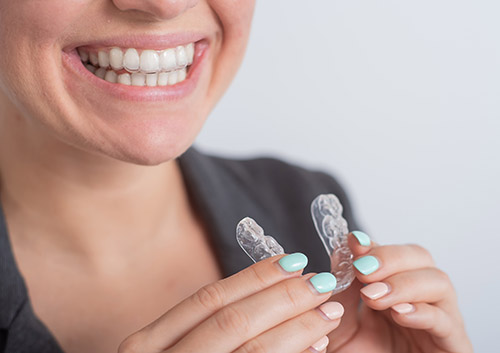Caring for Your Smile during Damon® Smile Treatment
January 10th, 2024

Having crooked, unevenly spaced, or misaligned teeth can interfere with your life at any age. Damon Smile treatment involves braces without bands, faster treatment times, and less pain than regular metal braces for teens and adults. These braces, offered at our Wichita Falls, TX office, can straighten your teeth for a variety of benefits.
- Allows you make a good first impression on people
- Helps you speak more clearly
- Makes it easier to clean your teeth
- Gives you more self-confidence
It’s important to practice good dental hygiene when you have braces. If you do, you can avoid accidentally letting your teeth decay during the months or years of treatment. These are some ways you can care for your smile during Damon Smile treatment.
Keep brushing and flossing.
Maintain your regular good dental hygiene habits. Continue to brush twice a day, being careful to get all of the food out from your Damon Smile braces. Floss and use mouthwash regularly, too. Also think about keeping your mouth clean during the day. Rinse your mouth with water after you eat if you’re not able to brush your teeth. Avoid sugary beverages, such as sodas, and stick to water.
Choose your foods carefully.
You’ll be able to eat whatever you want after you get your braces off. In the meantime, you can keep your mouth healthy by selecting the right foods and avoiding the wrong ones. Sugary foods are poor choices anytime, but they’re even worse when you have braces because they’re more likely to get stuck on your braces and stick to your teeth. Eventually, you could get tooth decay. Popcorn, chips, and nuts can also get stuck in your braces.
Some foods are hard to chew. They can make a bracket pop off your tooth so that you need to visit your orthodontist. Be wary of the following foods:
- Stringy meats
- Crunchy foods, such as raw vegetables and apples
- Chewy foods, such as bagels and toffee
Straightening your teeth is an investment in your future and yourself. Damon Smile braces can make your teeth straighter in less time than traditional metal braces, and with less embarrassment. Just be sure to care for your smile while your braces are on to make sure that your teeth are healthy when you get your braces off.




